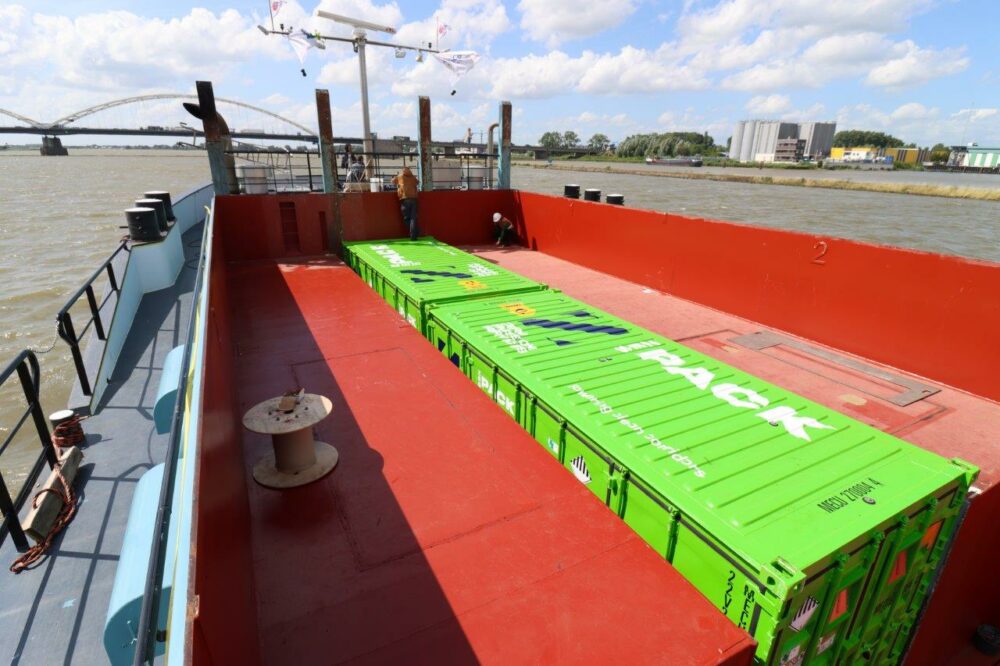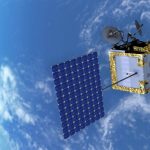The Nationaal Groeifonds, an initiative of the Dutch Ministries of Economic Affairs & Climate Change and Finance, is investing in Zero Emission Services (ZES) to speed up the implementation of ZES’ system solution for inland shipping.
According to ZES, the company will receive the €50 million (around $54.9 million) investment for the entire value chain in which it operates.
It will be used for the development of 75 battery containers for maritime applications (ZESpacks), 14 docking stations where the ZESpacks are charged and 45 electrified inland vessels.
Bart Hoevenaars, CEO of ZES said: “This is not only good news for the inland shipping sector and for ZES, but above all, it leads to a better living environment. Now, completely clean sailing will be possible without the emission of CO2, nitrogen and particulates. In addition, it is also silent. The Nationaal Groeifonds supports skippers in investing in an electric propulsion line.
“Zero Emission Services can now invest in the most expensive part, the battery containers, so that these skippers only pay for use. With the support, publicly accessible docking stations can also be realised along a number of crucial shipping routes for inland navigation in the Netherlands. By making it possible to invest in these three things simultaneously, the well-known chicken-and-egg dilemma for green transport is broken.“
Positive impacts of zero-emission inland shipping
Switching to zero-emission inland shipping has several positive impacts including those on the climate and the economy and employment, ZES claims.
Through the Nationaal Groeifonds, the government is setting aside €20 billion (around $21.76 billion) for projects between 2021 and 2025, targeting investments for structural and sustainable economic growth.
With the “Green Deal Zeevaart, Binnenvaart en Havens”, the Netherlands is committed to reducing the CO2 emissions of the Dutch inland shipping fleet by 40% to 50% in 2030 compared to 2015. Moreover, a minimum of 150 ships will have to sail zero-emission in that year.
As reported, if the Netherlands switches over completely to zero-emission inland navigation vessels, this will save a cumulative 6.6 megatonnes of CO2 and up to 17,500 tonnes of NOx by 2050. As a result, cities, nature areas and (inland) ports will become cleaner and quieter.
The use of the ZESpacks is also said to increase the adaptability of solar and wind parks because they can store generated energy until the moment the energy is actually required. The physical infrastructure for the docking stations is thus a building block for a local ‘clean energy hub’, the company explains.
Apart from docking the battery containers with clean energy, docking stations also offer possibilities to reinforce the electricity grid and the battery containers can also be used to balance the energy network.
Furthermore, ZES said that the concept creates jobs in new construction and the conversion of ships as instead of buying new ships, existing ships can be converted to electrically powered ships.
Other jobs are created within the daily operations of docking stations and other parts within the value chain. The ZES system offers the Netherlands opportunities to maintain its lead as an important, innovative logistics sector and can serve as an example for similar challenges in other sectors.
First Dutch zero-emission inland vessel
The country’s first zero-emission inland ship, the Alphenaar of CCT, has been sailing on the basis of exchangeable energy containers since September 2021.
The Alphenaar sails between Alphen aan den Rijn and Moerdijk transporting beer for Heineken, ZES’s first end customer.
With the investment of the Nationaal Groeifonds, ZES expects the number of ships, batteries and docking stations to be upscaled more quickly.
“When the first 45 ships sail with the help of this investment, the expectation is that the market will be able to grow in the number of ships, battery containers and docking stations by its own means”, ZES concludes.
Source: Offshore Energy






